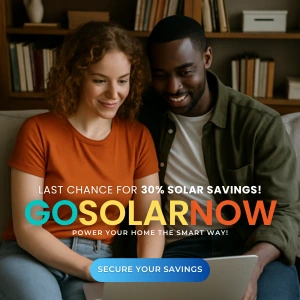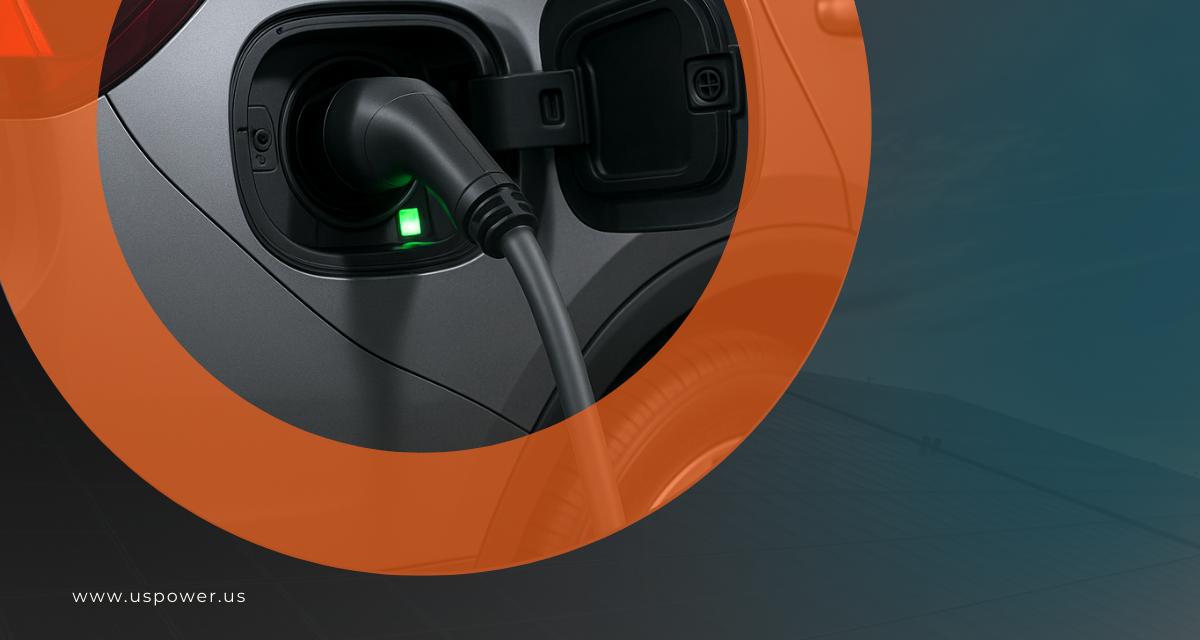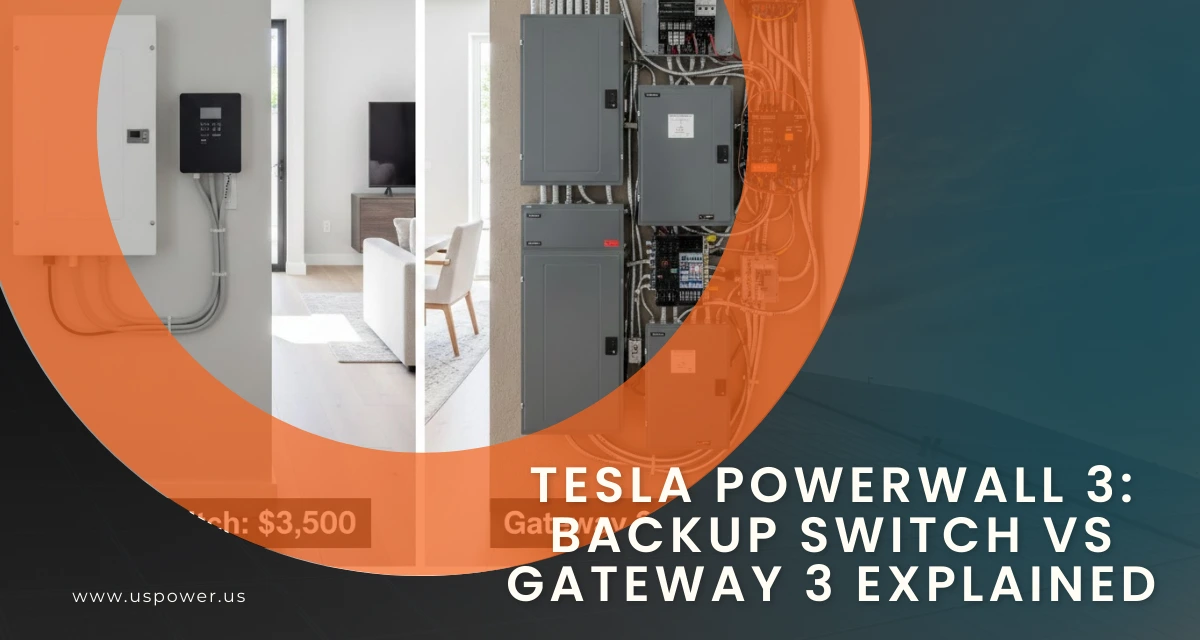Can You Use Qcells Solar Panels with Non-Qcells Batteries?

Solar and Roofing Advisor
Thinking about pairing your Qcells solar panels with a different inverter or battery? Here’s what every Southern California homeowner should know.

Qcells has become a trusted name in solar for its American-made, high-efficiency panels and industry-leading warranties. With an exclusive factory-direct partnership through US Power, homeowners across Southern California—from Encino and Sherman Oaks to San Diego—can now access premium Qcells systems at competitive prices.
But a common question homeowners ask is:
“Can I use non-Qcells batteries or inverters with my Qcells panels?”
The answer is yes—but with some important conditions. Compatibility, warranty, and system performance all depend on how your system is designed and installed.
You Can Use Non-Qcells Inverters and Batteries—Here’s When It Works
Qcells solar panels are designed to work with most industry-standard inverters and batteries as long as the electrical specifications and communication protocols match. That means you can often mix and match components to suit your preferences or budget.
For example:
- Inverters: Brands like SolarEdge, Enphase, GoodWe, and Huawei have been successfully paired with Qcells modules worldwide.
- Batteries: Systems such as Tesla Powerwall, LG Energy Solution, and BYD are technically compatible when paired with a supported hybrid inverter.
As long as your string voltage, current, and maximum power point tracking (MPPT) ranges fall within the inverter’s limits, you can achieve optimal energy production without being locked into one brand.
Key Compatibility Factors to Check
1. Electrical Specifications
Each inverter has a maximum DC input voltage and current range. The number of panels in each string must not exceed these limits. For example, a typical Qcells Q.PEAK DUO ML-G10+ 400W panel has:
- Max system voltage: 1,000V
- Operating current: around 10A
Your installer must design the string layout to stay within these values under extreme weather conditions.
2. Communication Between Battery and Inverter
Hybrid inverters use digital communication (like CAN bus or RS-485) to talk to batteries. If you mix brands, they must “speak the same language” for efficient charging, discharging, and monitoring.
For instance:
- A GoodWe ES Series hybrid inverter can work with batteries from BYD, Pylontech, or LG when firmware and communication settings align.
- A Tesla Powerwall integrates with many solar systems, but the inverter must support Tesla’s control logic for proper backup operation.
3. Warranty Considerations
Qcells’ integrated systems—panels, inverter (Q.VOLT), and battery (Q.SAVE)—come with a “One Brand, One Warrantor” promise.
Mixing brands may shift responsibility between manufacturers. For example, if your inverter fails while using a non-Qcells battery, each company may handle warranty claims separately.
To keep peace of mind, have your installer (like US Power) document compatibility and warranty coverage in writing.
4. Monitoring and Software Integration
Qcells systems use Q.OMMAND Home for real-time performance tracking.
If you use a third-party inverter or battery, you may need to manage multiple apps or lose integrated visibility into production and storage performance.
5. Local Code Compliance (California)
California utilities—like Southern California Edison, LADWP, and SDG&E—require all systems to meet UL standards and rapid-shutdown codes for safety.
US Power ensures that every design, regardless of brand mix, meets California’s NEM 3.0 interconnection requirements for solar plus storage.
Compatible Options for Qcells Panels (2025 Update)
Here are some real-world combinations that work well with Qcells panels in 2025:
| Equipment Type | Recommended Models | Notes |
|---|---|---|
| Battery | Tesla Powerwall 3, BYD Battery-Box Premium, LG Energy Solution RESU 10H | Verify inverter compatibility for communication and backup. |
| Hybrid Inverter | GoodWe ES Series, SolarEdge Energy Hub, Enphase IQ8H | Ensure MPPT range suits Qcells array voltage. |
| All-in-One System | Qcells Q.HOME CORE (Q.VOLT + Q.SAVE) | Best for full warranty and monitoring integration. |
Why Some Homeowners Mix Brands
Homeowners often consider mixing equipment for one or more reasons:
- Lower Upfront Cost – Third-party inverters or batteries may offer savings over full proprietary systems.
- Feature Preferences – Some prefer specific app interfaces (e.g., Tesla app) or advanced power management.
- Upgrades or Retrofits – If you already have panels or a battery, integrating new components may be more practical than replacing everything.
At US Power, we design systems that balance cost, reliability, and performance, ensuring every combination is properly engineered and code-compliant.
Expert Insight: Why Qcells Systems Remain the Gold Standard
While mixing brands can work, using a full Qcells system delivers advantages that go beyond convenience:
- Seamless integration between panels, inverter, and storage
- Optimized performance across all system components
- Single warranty coverage up to 25 years
- Unified monitoring through the Q.OMMAND platform
For homeowners seeking a set-and-forget solution, Qcells’ all-in-one Q.HOME CORE is engineered for the American grid and is UL-9540 certified for safety.
What This Means for Southern California Homeowners
Under California’s NEM 3.0, homeowners earn less credit for sending excess power back to the grid. That makes energy storage more valuable than ever.
Pairing your Qcells panels with a compatible battery lets you:
- Store surplus energy during the day
- Power your home at night or during outages
- Avoid peak utility rates
- Boost long-term savings
Whether you choose a full Qcells system or a mix of brands, a professional design from US Power ensures you capture the best value and avoid costly mistakes.
Questions to Ask Before Finalizing Your Equipment
- Will the inverter and battery brands communicate correctly?
- Is the inverter’s voltage range compatible with Qcells panel specs?
- Does the system meet California safety codes (NEC 2017, UL 9540, rapid shutdown)?
- What happens to my warranty if I mix brands?
- Will I have full monitoring access for both production and storage?
How US Power Simplifies Compatibility
As a trusted Qcells installation partner, US Power provides:
- Custom system design tailored for your roof, energy goals, and budget
- Verified compatibility when mixing brands
- Factory-direct pricing on Qcells panels and batteries
- Expert installation meeting Southern California’s strict codes
- One-stop support for warranties and maintenance
Whether you prefer a full Qcells setup or a hybrid design, our team ensures you get maximum efficiency, savings, and long-term peace of mind.
Ready to Build the Perfect Solar System?
There’s never been a better time to take control of your home’s energy future. With electricity rates across California continuing to rise and utility companies tightening NEM 3.0 export rules, homeowners who act now can lock in long-term savings and energy independence.
Federal incentives are still active through 2025, including the 30% Federal Solar Investment Tax Credit (ITC), which allows you to deduct nearly one-third of your solar or solar + battery system cost from your federal taxes. But like most programs, these incentives won’t last forever—especially as state regulators review future rebate and grid-credit policies.
By partnering with US Power, you gain access to:
- Exclusive Qcells factory-direct pricing on American-made solar panels
- High-efficiency systems optimized for Southern California’s year-round sunshine
- Professional solar and battery installation designed to meet all state and local codes
- Transparent ROI projections, showing you exactly how much you can save
- One-on-one expert guidance—from your first consultation to system activation
Our goal is simple: to help you build a custom solar solution that delivers maximum performance, reliable storage, and sustainable savings for decades to come.
Book Your Free Solar Consultation
Don’t wait until utility rates climb higher or the tax credit phase-outs begin—get your system locked in while incentives are still at their peak.
Frequently Asked Questions
Artículos relacionados
Nuestros blogs relacionados
Explore upcoming EV charging trends and solutions for Southern California homes.
Learn why most Tesla Powerwall 3 installers overcomplicate battery backup designs.
Explore whether adding a battery to your solar system maximizes your savings.








Empoderamos a las comunidades y las empresas para que aprovechen las energías limpias y renovables energía solar soluciones que impulsan el crecimiento sostenible.
Derechos de autor © 2025 US POWER | Energía solar y techosUS Power - Axia by QCells. All Rights Reserved.
La privacidad es importante para nosotros, por lo que tiene la opción de deshabilitar ciertos tipos de almacenamiento que pueden no ser necesarios para el funcionamiento básico del sitio web. El bloqueo de categorías puede afectar a su experiencia en el sitio web.
Imprescindible
Estos elementos son necesarios para habilitar la funcionalidad básica del sitio web.
Personalización
Estos elementos permiten que el sitio web recuerde las elecciones que ha realizado (como el nombre de usuario, el idioma o la región en la que se encuentra) y proporcionan funciones mejoradas y más personales.
Mercadeo
Estos artículos se utilizan para ofrecer publicidad que sea más relevante para usted y sus intereses.
Analítica
Estos elementos ayudan al operador del sitio web a comprender cómo funciona su sitio web, cómo interactúan los visitantes con el sitio y si puede haber problemas técnicos.
Nosotros y nuestros socios externos utilizamos cookies y otras tecnologías para mejorar y rastrear su experiencia en este sitio, realizar análisis y personalizar el marketing para usted. Al usar el sitio, aceptas que usemos estas tecnologías, incluido el registro y el monitoreo de tus interacciones con el sitio.
¡Obtenga una estimación solar instantánea usando el satélite!










